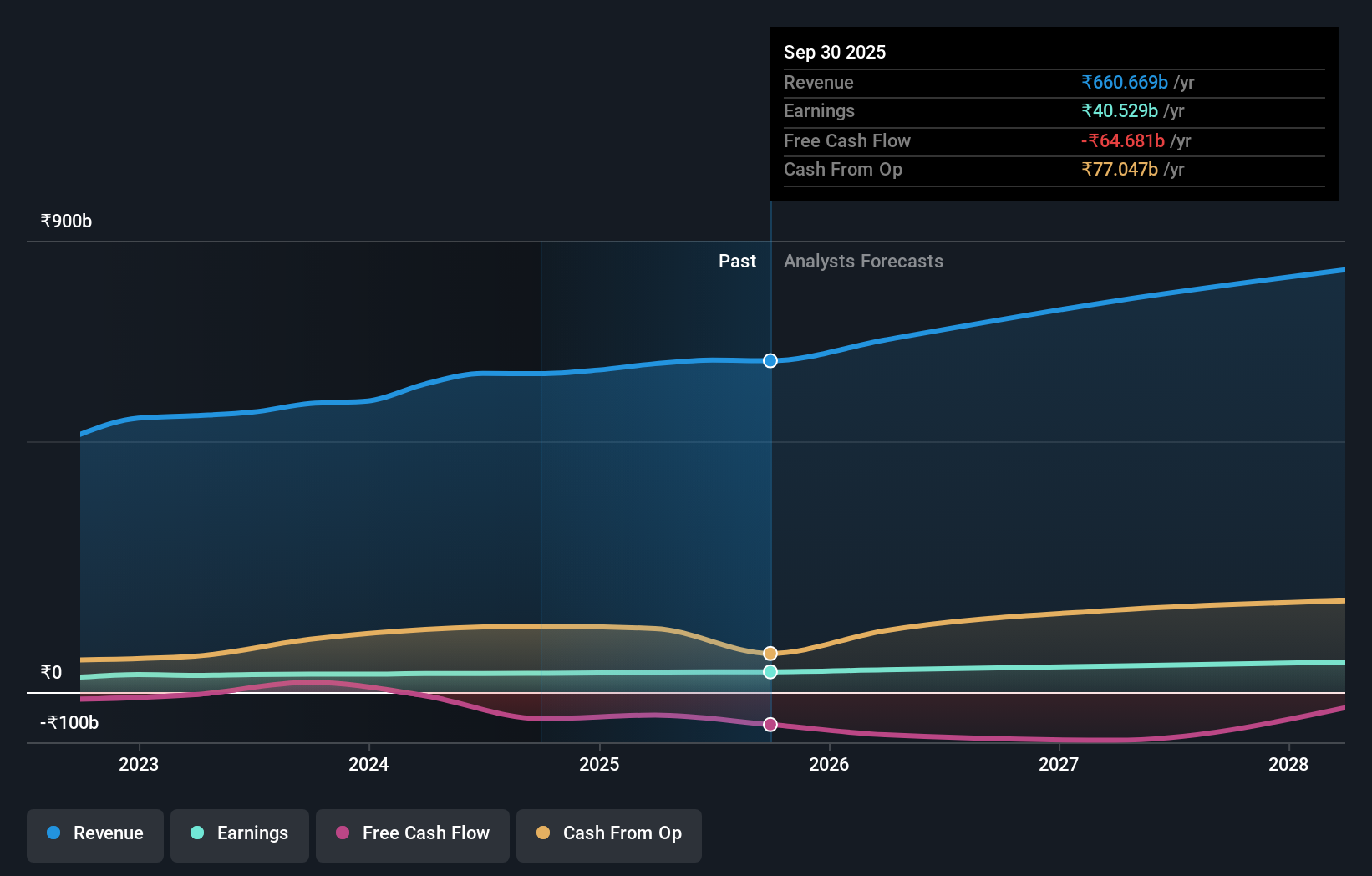- India
- /
- Electric Utilities
- /
- NSEI:TATAPOWER
Tata Power Company Limited Just Missed EPS By 8.1%: Here's What Analysts Think Will Happen Next
Tata Power Company Limited (NSE:TATAPOWER) just released its latest quarterly report and things are not looking great. Tata Power missed analyst forecasts, with revenues of ₹155b and statutory earnings per share (EPS) of ₹2.88, falling short by 3.3% and 8.1% respectively. Earnings are an important time for investors, as they can track a company's performance, look at what the analysts are forecasting for next year, and see if there's been a change in sentiment towards the company. We've gathered the most recent statutory forecasts to see whether the analysts have changed their earnings models, following these results.

After the latest results, the 19 analysts covering Tata Power are now predicting revenues of ₹702.1b in 2026. If met, this would reflect a reasonable 6.3% improvement in revenue compared to the last 12 months. Statutory earnings per share are predicted to swell 11% to ₹14.03. Before this earnings report, the analysts had been forecasting revenues of ₹721.4b and earnings per share (EPS) of ₹14.65 in 2026. The analysts are less bullish than they were before these results, given the reduced revenue forecasts and the minor downgrade to earnings per share expectations.
View our latest analysis for Tata Power
The analysts made no major changes to their price target of ₹419, suggesting the downgrades are not expected to have a long-term impact on Tata Power's valuation. It could also be instructive to look at the range of analyst estimates, to evaluate how different the outlier opinions are from the mean. The most optimistic Tata Power analyst has a price target of ₹510 per share, while the most pessimistic values it at ₹265. These price targets show that analysts do have some differing views on the business, but the estimates do not vary enough to suggest to us that some are betting on wild success or utter failure.
These estimates are interesting, but it can be useful to paint some more broad strokes when seeing how forecasts compare, both to the Tata Power's past performance and to peers in the same industry. The period to the end of 2026 brings more of the same, according to the analysts, with revenue forecast to display 13% growth on an annualised basis. That is in line with its 16% annual growth over the past five years. Compare this with the broader industry, which analyst estimates (in aggregate) suggest will see revenues grow 11% annually. It's clear that while Tata Power's revenue growth is expected to continue on its current trajectory, it's only expected to grow in line with the industry itself.
The Bottom Line
The most important thing to take away is that the analysts downgraded their earnings per share estimates, showing that there has been a clear decline in sentiment following these results. They also downgraded their revenue estimates, although as we saw earlier, forecast growth is only expected to be about the same as the wider industry. The consensus price target held steady at ₹419, with the latest estimates not enough to have an impact on their price targets.
Keeping that in mind, we still think that the longer term trajectory of the business is much more important for investors to consider. At Simply Wall St, we have a full range of analyst estimates for Tata Power going out to 2028, and you can see them free on our platform here..
That said, it's still necessary to consider the ever-present spectre of investment risk. We've identified 2 warning signs with Tata Power (at least 1 which doesn't sit too well with us) , and understanding them should be part of your investment process.
Valuation is complex, but we're here to simplify it.
Discover if Tata Power might be undervalued or overvalued with our detailed analysis, featuring fair value estimates, potential risks, dividends, insider trades, and its financial condition.
Access Free AnalysisHave feedback on this article? Concerned about the content? Get in touch with us directly. Alternatively, email editorial-team (at) simplywallst.com.
This article by Simply Wall St is general in nature. We provide commentary based on historical data and analyst forecasts only using an unbiased methodology and our articles are not intended to be financial advice. It does not constitute a recommendation to buy or sell any stock, and does not take account of your objectives, or your financial situation. We aim to bring you long-term focused analysis driven by fundamental data. Note that our analysis may not factor in the latest price-sensitive company announcements or qualitative material. Simply Wall St has no position in any stocks mentioned.
About NSEI:TATAPOWER
Tata Power
Engages in the generation, transmission, distribution, and trading of electricity in India and internationally.
Proven track record average dividend payer.
Similar Companies
Market Insights
Community Narratives




